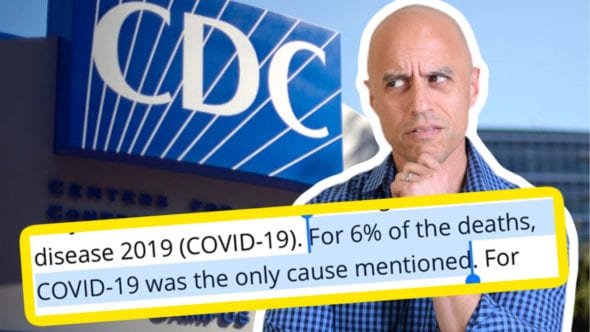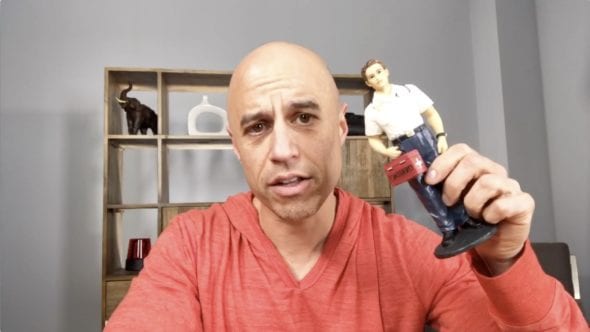Here’s what you need to know about the current monkeypox outbreak, including how it spreads, how to diagnose and treat, and whether YOU should worry about this in the first place.
 FREE CME ACCESS for this episode! Click here.
FREE CME ACCESS for this episode! Click here. (applicable to physicians, nurse practitioners, PAs). For all other health professionals, please check with your state board as to whether they accept these AMA credits for CE requirements. Please note, credit is earned not from the content of the episode, but from your reflection on the content. Powered by CMEfy – a seamless way for busy clinician learners to discover Internet Point-of-Care Learning opportunities that reward CME credits & more.
(applicable to physicians, nurse practitioners, PAs). For all other health professionals, please check with your state board as to whether they accept these AMA credits for CE requirements. Please note, credit is earned not from the content of the episode, but from your reflection on the content. Powered by CMEfy – a seamless way for busy clinician learners to discover Internet Point-of-Care Learning opportunities that reward CME credits & more. – [Zubin] Yo, monkeypox. Ha! Just when we thought we were out, the media keeps pulling us back in. Now, this is something we should talk about. Should you be worried about monkeypox? What the heck? Even the name. You’re just, like, . It conjures, like, a blockbuster movie, with monkeys spitting phlegm, and people bleeding out of their eyes, right? But is it really that?
How does it relate to SARS-CoV-2? Should you be worried? And what about physicians and frontline healthcare workers? How would you recognize, treat, diagnose, et cetera? Let’s talk about it all, guys. It’s May 22nd, so the story may change after this date, but this is what we know so far. All right. Monkeypox, first of all, is in the same family of viruses, it’s a DNA virus, as smallpox. That’s an orthopoxvirus. Now, it actually has very similar symptoms and signs to smallpox, and in the sense that you can get high fevers, muscle aches, fatigue, in the first few days, and then the development of a rash, which are these, starts as little bumps, little macular bumps. if you’re nasty, and then they get full of kind of a clear fluid that then turns more yellowish, looks more like pus. Then they drain, they form scabs, they slough off, and you presumably heal, if you’re not one of the people who does not do well, which we’ll talk about. And so both diseases look similar.
The difference is… Few differences. Monkeypox does not kill as many people as smallpox. So smallpox had a 30% case fatality rate when it was raging, we’ve eradicated it, which we’ll talk about, monkeypox, more like between 1 and 10%, depending on the strain, and depending on where you are, because remember, case fatality rate depends also on the quality of medical care and supportive care that you get, and where this thing is endemic in Africa, often the health care can be very spotty, so we don’t have wonderfully good data on what that case fatality rate would be like in the West, but we’re gonna talk about some ideas about that. The differences in the early symptoms of smallpox versus monkeypox, or, say, measles, chickenpox, other diseases in different virus families that actually also present with fevers, and muscle aches, and fatigue, and a rash. The difference with monkeypox is it’s more likely to cause really swollen lymph nodes.
So medical professionals, too, who are seeing this rash kind of thing, if there’s a lot of lymphadenopathy, big, swollen lymph nodes, you may wanna raise your alert for monkeypox. Gosh, that name! Where did the name even come from? Well, in 1958 there was a colony of research monkeys. This sounds like the setting for, like, a Philip K. Dick science fiction novel gone bad, Planet of the Apes, with monkeypox involved. “You damn, dirty apes, you blew it all up!” That’s the worst Charlton Heston impression I’ve ever done, ’cause I’ve never done one. Those monkeys in that initial colony, they diagnosed with monkeypox, and that’s why they got the name, but it turns out it’s a misnomer, because it ought to be called ratpox, or squirrelpox, or rodentpox, or mousepox, because those rodents are actually more likely to be the reservoir in animals where this thing is found, and we have some information on that which is quite interesting, which hopefully, we’ll get to.
So this was discovered in humans around 1970, and since then, there have been sporadic outbreaks in Africa. Nigeria’s been struggling with it, Congo, et cetera, and so it’s kind of come and gone. Now, what’s interesting is it’s actually been increasing a little bit in terms of outbreak stuff. And why would that be? This is fascinating. Remember we talked about smallpox? Smallpox, unlike monkeypox, does not have an animal reservoir. Humans are the reservoir, which is why it’s the only disease we’ve been able to eradicate using vaccines and quarantine, et cetera, and it was declared officially eradicated from humans in 1980. There’s still a couple of stock piles in labs in the US and in Russia, and we still keep a stockpile of the vaccine in case there’s bioterrorism or some weird natural emergence of smallpox again. So we were able to eradicate it, unlike what we can do with SARS-CoV-2, which can be in animals, and monkeypox, which can also be in animals.
But that smallpox vaccine that was used historically and actually stopped. There was the end of the mass vaccination campaign in the United States around 1972. And here’s a little funny side note. I was born in 1973, and my mom took me to India shortly after I was born so that family could help take care of me and she could be with family, et cetera, so I spent about six months in India in my youngest months. I actually got the smallpox vaccine when I was in India, because there, they were still doing the campaign, because it hadn’t been eradicated in India yet. And so people who’ve had smallpox vaccine in the US are typically older than 50. I’m 49, and I have the scar, and you can see that’s sort of the Scarlet Letter of having had the smallpox vaccine, because it is a replicating virus in that vaccine, called vaccinia, that actually replicates and causes a blister, kind of like the kind of blisters you would get in smallpox, but localized, and it would burst, and scab up, and leave a scar, just like what happens with smallpox and monkeypox, which we’ll talk about. So that vaccine, because both smallpox and monkeypox are orthopoxviruses, there’s a ton of cross-coverage from the vaccine. In fact, it’s why you can’t really test antibodies, or antibody testing, now, for monkeypox, because anyone who’s been vaccinated with the smallpox vaccine, there’s cross-reactivity between the antibodies, and you may get a false positive. So, but people who’ve been vaccinated against smallpox have about 85% protection, in observational studies, against monkeypox.
Now, that smallpox vaccine waned, that immunity likely wanes over time. It’s strongest in three to five years after the vaccine, but it wanes over time, but there’s probably some lifelong degree of immunity, and so people with smallpox vaccine history likely would get less severe disease from monkeypox. Now, as we get further out from the end of mass vaccination campaigns for smallpox, more and more people, under the age of 50, in particular, are susceptible to monkeypox because they don’t have that immunity from the smallpox vaccine. Isn’t that interesting? Now, if you’re looking at what’s going on now, we have 120 cases outside of the endemic area. This is kind of unprecedented for monkeypox.
And so we’re gonna talk about what’s happening, but a lot of them are in men, or men who have sex with men, in the age groups 20 to 50, so they probably don’t have smallpox vaccine coverage. And this speaks to what may happen in transmission, which is really interesting. So before we talk about that, though, let’s talk about how would you recognize and diagnose the monkeypox, which I’m gonna start calling the monkeypox because it just sounds more what an old person would say. The monkeypox, you can look at the course of the disease, first of all, to get a suspicion. So obviously, if you’re coming from Africa or an endemic area, high index of suspicion, if you’re a healthcare professional, to look for it. It typically will cause fevers, muscle aches, feeling like you’ve been hit by a truck, extreme weakness, really bad headache in the first three to five days. And what’s different, compared with measles, smallpox, et cetera, is this lymph node swelling, lymphadenopathy, they call it.
That’s how you can really distinguish it, because smallpox, measles, chickenpox, they don’t typically cause all that lymph node swelling, but monkeypox does, and that’s one way that should really raise your concern level. After that three to five days, the disease kind of starts to show the rash, and typically, there are these little bumps, and then they form the little vesicles on top of fluid, and then that can turn to look like more like pus. Then they start to drain, and then scab up and peel off, kind of like chickenpox a little bit, but more disgusting. And the rash is typically found on the face, the palms, the hands, the extremities, the feet, less so on the trunk and stuff, but it can happen, and the genitals is interesting, you can see it there in 30% of cases, and in the eyes and the mucus membrane in a reasonable amount of cases. So this should sort of raise your suspicion, and that’s kind of how it presents. And the entire course of the disease, about two to four weeks, and most often is self-limiting. In other words, you get better. But again, with a 1 to 10% case fatality rate historically, not everybody does, and that’s why there’s some concern. But more information is needed in industrial economies where you have access to good health care.
So that being said, you have this disease now, when is it contagious? Well, it’s felt to be contagious in the sense that when you have actual symptoms, so particularly the rash, because it’s transmitted, it’s felt, by fluids. That means large respiratory droplets, like spit flying, not like SARS-CoV-2, where it’s small, fine respiratory droplets that may originate deeper in the lung, et cetera, and that’s why it’s so contagious. Like, right now, the current variants of SARS-CoV-2 are like chickenpox-level contagion, like the R0, how many one person can infect when they’re infected, how many other people they can infect, it’s like, 7, 8, it’s like, quite high, whereas for monkeypox, that R0, historically, has been less than 1. Each person who’s infected infects less than one other person, on average, and often it comes directly from the animal to the person, and then person-to-person peters out really fast. Now, that may be changing as our immunity wanes because we’re farther out from those smallpox vaccinations.
So all that being said, what you can see with the transmission is that you really need that fluid. So it could be direct contact with lesions, those rashes, it could be bedding, where someone has slept, people sharing bedding, objects that have touched that sort of juice that comes off people, or direct close contact. And it’s not been clearly documented as a sexually transmitted disease, because they don’t think it’s in semen, but if you have lesions, and remember, it affects genitals, and you’re rubbing up on yourselves, well, that’s a way to potentially transmit. And so that’s how, it’s felt, the human-to-human transmission happens. And what we’re seeing currently is quite interesting, because you have 120 cases, the UK, Spain, the United States, which, by the way, here’s an interesting thing, this is not the first time this has happened. Listen to this. In 2003, there was an outbreak of monkeypox in the United States, in the Midwest, because they had imported pouched Ghanan rats, I think that’s what they’re called, from Ghana, and dormice, both of which can be reservoirs of monkeypox, brought them to the US, those animals infected prairie dogs, which are kept as pets. Those prairie dogs infected 70 Americans with monkeypox, all of whom had reasonable self-limited illness, and there were no deaths. So this is not unprecedented. But now what we’re seeing is, what is unprecedented is seeing this many cases outside of Africa without a clear prime source. And so what are we seeing?
We’re seeing the outbreaks more often in men, 20 to 50, who have sex with men, so they could be gay, bisexual, or transgender, but men having sex with men, and so there’s a feeling, a concern, that it could be that there were, it was introduced in those communities and spread in those communities maybe even before they were clearly detected, and that was kind of like a mini superspreader event, and then folks dispersed, because now we have a very connected globe, where everybody’s one flight away from everybody else. Maybe it started in Africa, and then it spread throughout, and now you have it more commonly in that community. Again, it’s not clearly a sexually transmitted disease, although having sex and that close contact between, with those rash touching, can spread the disease. So that’s where we’re seeing it most commonly now, and that’s where all the investigation is happening. So what could be some explanations for why this is happening? Well, I think one is waning immunity from lack of smallpox vaccine, which we don’t need, we didn’t think we needed, right? The second thing is, could it be that the virus itself is mutating and becoming more adept at transmission, human to human.
That would be bad, because it means, then, it would approach something that’s very different than we have now, where it’s gotta come from an animal, it comes to humans, and it peters out really fast. If that R0 increases in humans and it’s more transmissible, well, that’s a problem. Well, here’s some reasons where that may be less likely. And I think one of them, the big reason is that it’s a DNA virus, a large DNA virus, unlike SARS-CoV-2, which is an RNA virus. Now, recall, RNA viruses are more prone to mutate because they don’t have good error-correction software, so to speak. When they replicate, it’s really buggy, and so they make a lot of mutations. DNA viruses have good error-correction mechanisms, and so they’re less likely to have big mutations. And if you look at smallpox, we were able to eradicate it with a single vaccine, so it never was able to mutate out of even one vaccine, whereas look at SARS-CoV-2, the variants are popping up that are less susceptible to our original vaccine strains. So I think that’s probably less likely, and virologists agree, although it’s not impossible. So you look for that. And I think the general waning of immunity, and I think travel from endemic areas, and then this interesting superspreader event of men having sex with men, where it might just have been an unlucky event where this happens as we’re opening up, and everything. So that may be the reason we’re seeing this, but obviously, the authorities, who nobody really trusts anymore , are investigating.
So the question is, are you worried? Should you worry about this? And the truth is, well, if you’re living in an endemic area, yeah. If you have signs and symptoms, you can ask your doctor. If you’re in that community of men that has sex with men, you should maybe be concerned, and understand that if somebody has symptoms, that’s when they’re transmissible. This is not, that we know of, asymptomatically transmitted, like SARS-CoV-2, where you can have no symptoms and still be transmitting, and then maybe get symptoms later. In this case, you gotta have stuff, fever, rash, et cetera, before it’s gonna transmit. Now, who does it affect, by the way? Well, it actually seems to harm immunocompromised people more, and young people more, especially young people, because they haven’t had any exposure to smallpox vaccine, but it’s different than SARS-CoV-2 in that it can preferentially harm the young, but not always. The people in this group were 20 to 50 years old, but they’re doing okay. There are no deaths so far, knock on wood. And the idea that we have potential solutions for this makes this really different than what SARS-CoV-2 looked like in the beginning, apart from the fact that it’s very difficult to transmit. And what are the solutions?
Well, it turns out we still have, we have two different vaccines that are effective against smallpox, and one of them is an attenuated version of vaccinia, which is the virus used in the smallpox vaccine, and it’s actually safer than the original smallpox vaccine, because in one in a million cases, for smallpox vaccine, that vaccinia would replicate uncontrolled because the person had immunocompromise or was undiagnosed with something, and they would die. So that’s why they said, well, that was one of those cases where if we don’t need to vaccinate, let’s not do it, because we had that older vaccine. Well, now there’s newer vaccine that actually has an attenuated virus that isn’t likely to do that. And so there is a vaccine, and it’s possible that you could vaccinate close contacts of people who show positive for monkeypox, and end the transmission strains. I don’t think there’s an indication for mass vaccination for this, yet, for all the reasons that we talked about. So you have that.
And then there’s actually, how do you treat monkeypox? Well, most people just get better. but it’s supportive care, treating any bacterial superinfections that can happen if the lesions get infected. And there is a cool anti-smallpox medicine that is in small supply, that we have, called, what is it? Tecovirimat, Tecovirimat. I actually remember it by its trade name, which is TPOXX. I didn’t even make that up. T-P-O-double-X. Come on, dude, pour a little out. TPOXX still raps by hologram. Yeah, but TPOXX is available, you have the vaccine, and you have a disease that we don’t really… I think the infection fatality rate’s gonna be lower in the West. So the bottom line is, don’t panic. Now, what if you’re a physician, or a frontline healthcare professional, or a nurse practitioner, and you’re thinking about this, your index of suspicion is there, somebody has a fever, or they had a fever, now they have a rash, it looks like chickenpox, or what you remember smallpox pictures looking like, ’cause barely anyone’s seen it in living memory. You’re thinking, maybe, could it be measles?
It’s an adult, what’s going on? Or it’s a kid. Well, this is how you diagnose it. There isn’t great blood testing, because the virus barely replicates in blood, that period of viremia is very short, so you may not catch it, and like I said, antibody testing may be confounded by false positives from smallpox vaccine or other things. So it’s a PCR test. And the best sample you can get is from the lesion itself, the rash itself. You unroof it, get the juice, put it in the right medium that your lab tells you, ship it off for PCR. And that’s how you can diagnose it. And having that index of suspicion. Maybe they have lymphadenopathy, which is kind of unusual with measles and chickenpox, not unheard of, but unusual, you have a high index of suspicion. Maybe they are in the group that we’re seeing now, men who have sex with men, you wanna pay more attention to that. But really that’s it. And then, of course, let the authorities do the epidemiology, and the contact tracing, and the workup that will tell us what’s going on, but there will be delay with that. So that’s the long story that the media will turn into monkeypox! Should we panic? Nah, you shouldn’t panic. Come on. Just understand, be prepared, get your learn on, and get ready for TPOXX, yo, because that’s whack. All right, guys, I love you.
Do me a favor, share the video. I put on a coat for you guys. It’s Sunday. I don’t need to be wearing no coat. I don’t typically go to church. You’re my church. And you can actually join our little cult church, our supporter tribe, zdoggmd.com/supporters, where we have uncensored live discussions, you guys talk with each other. It’s a whole community of alt-middle people that are just trying to find higher truths. All right, guys, share the video, and keep away from that monkey. I still wanna do ♪ Don’t you know you’re gonna ♪ ♪ Pox the monkey ♪ ♪ Do, doot, do, do, doot. ♪ We out.
Category
- The ZDoggMD Show (817)
- Featured Videos (189)
- Doc Vader (142)
- Against Medical Advice (128)
- Medical Humor (95)
- Public Service Announcements (87)
- Music Parodies (74)
- Nurses (59)
- Meditation (45)
- The VPZD Show (38)
- ZVlogg (36)
- ZTalks (28)
- ZBlogg (24)








